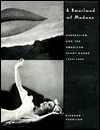A Boatload of Madmen: Surrealism and the American Avant-Garde, 1920-1950
By (author): "Dickran Tashjian"
Publish Date:
1995
ISBN0500236879
ISBN139780500236871
AsinA Boatload of Madmen: Surrealism and the American Avant-Garde, 1920-1950
Original titleA Boatload of Madmen: Surrealism and the American Avant-Garde, 1920-1950
In 1932, against the troubled background of the Depression, the American art community had its first glimpse of the revolutionary art of the Surrealists. Combining a fascination for Freud's new symbolic language of dreams with a radical leftist utopianism, the Parisian movement galvanized an emerging American avant-garde. New galleries opened to exhibit the "terrifying," "insane" works of Surrealist artists, and new magazines sprang up to publish a startling crop of Surrealist poetry, criticism, and vociferous attacks on mainstream culture and politics. Only four years later, a major Surrealist exhibition at the Museum of Modern Art catapulted Surrealism into the cultural limelight and the attention of high-fashion magazines like Harper's Bazaar and Vogue. Soon the art of Man Ray was selling cologne and swimwear and the manic Salvador Dali was designing windows for Bonwit's and a pavilion at the 1939 New York World's Fair. Even Andre Breton and his circle, exiled in Manhattan during World War II, were unable to assert control over this new kind of Surrealism. If anything, their cultural dislocation in these years gave Americans the edge in developing new Surrealist concepts and new movements such as Abstract Expressionism. In this innovative and vividly written cultural history, Professor Dickran Tashjian tells the story of Surrealism's remarkable sea change during its years in America, from a fiercely leftist, strongly literary, avant-garde movement into an apolitical, almost exclusively visual style. Exploring both "high" and "low" cultural perspectives, he shows how the American avant-garde selectively filtered and reshaped European Surrealism to meet its own agendas, and how it in turn was reinterpreted, de-politicized, and commercially exploited by mainstream American culture and the fashion/advertising industry.
